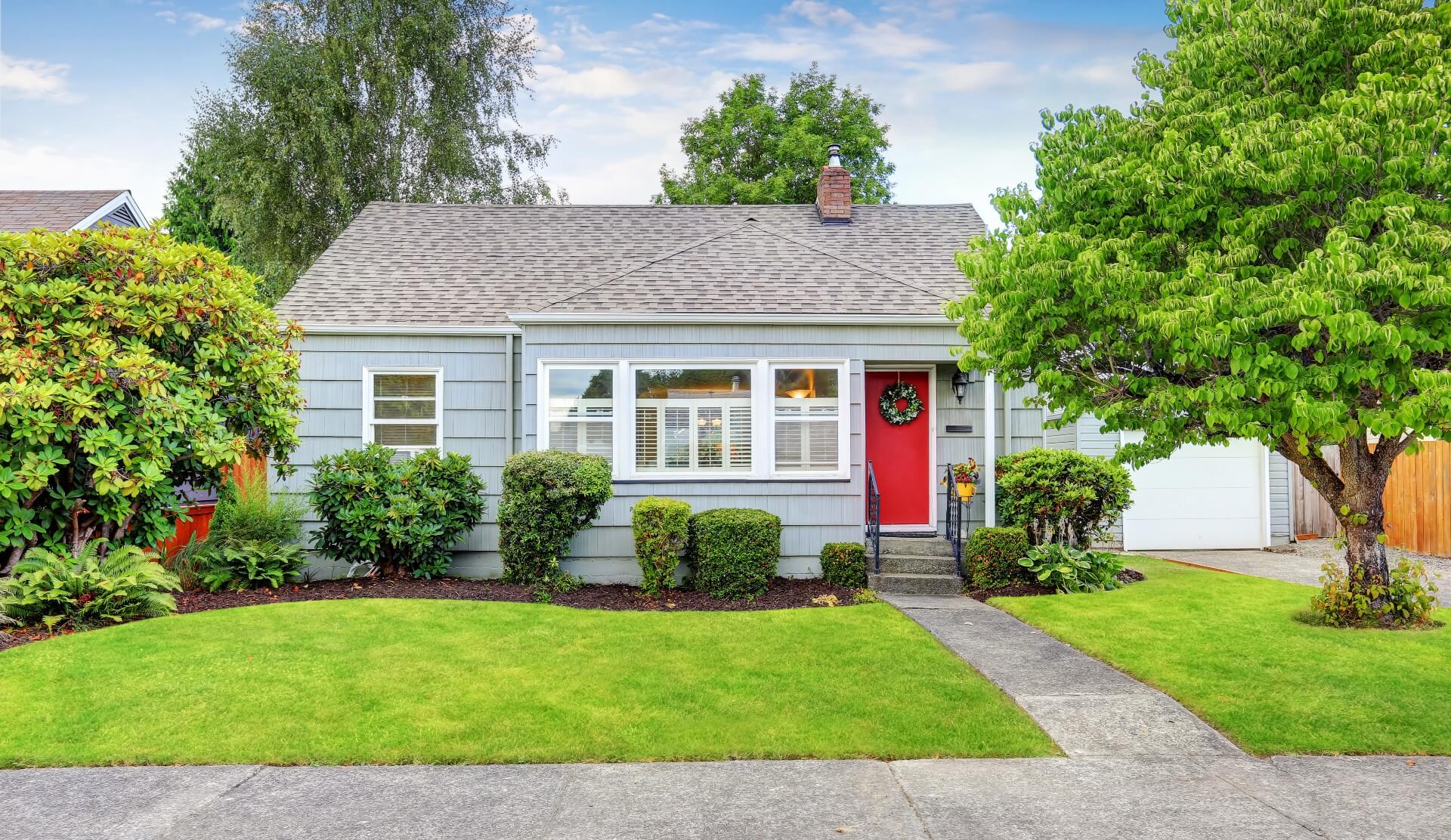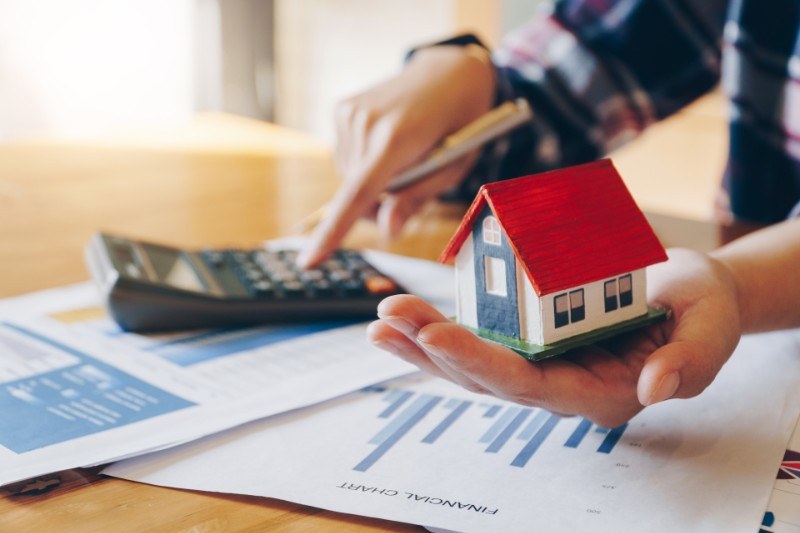
How Much Money Do You Need for a $200k House? Let's Break it Down
Posted on Jun 16, 2023
It’s a tough housing market for first-time homebuyers. Not only have home prices continued to...

Posted on Jun 16, 2023
Over the past several years, the average cost of buying a home has skyrocketed in most areas of the country. According to Realtor, the median listing price for a starter home (a home in the bottom third of a metro’s price range) in 2019 was a little below $220,000. Today, the same house would sell for $325,000 - a 48% increase in price.
Many new homebuyers today are realizing that $300,000 might be the right price for a home in their area - something that’s affordable and entry-level but doesn’t require a horde of contractors to be liveable.
The thing about buying a home, though, is that the sticker price does not always give a clear picture of the monthly payment. Factors such as interest rate, the down payment, and the home’s location can all dramatically affect the actual monthly cost.
Interested in getting a breakdown of how much a $300,000 will cost? Here’s what you need to know.
When you buy a home (unless it’s specifically a VA loan) you’ll need to put a percentage of the home’s value down to close on the home. With a conventional loan, you can put down as little as 3% - and the average first-time homebuyer puts down about 7%.
Of course, if you can put down 20%, it’s a good idea to do so - it will help eliminate private mortgage insurance (PMI) which you’ll need to pay until you have 20% equity in your home. It will also reduce the loan amount, which means you’ll pay less interest over time.
Here’s what your monthly mortgage payment could look like with different down payments (these payments include average tax + home insurance).
A difference of $410 per month (between putting 20% and 3% down) is quite significant. However, keep in mind that about $120 of that is private mortgage insurance (PMI) - which goes away once you have more equity in your home.
Keep in mind there are both costs and benefits to waiting until you have 20% - read more here.
The interest rate on mortgages rose significantly over the past couple years, and monthly payments rose with it - much to the chagrin of would-be homebuyers who didn’t get in early enough.
There are a few silver linings to the interest rate. When interest rates are high, competition isn’t as fierce. It’s likely (though not guaranteed) that the interest rate will dip a point at some point in the future. At that time, you have the option to refinance your loan. Although refinancing comes with a cost, you’ll typically break even after 2-3 years of continuing to live in your home. So you aren’t necessarily stuck with your interest rate forever.
3% is a fairly low interest rate - so what happens if it goes up by a single percentage point? Let’s take a look.
As you can see, a single point raised the monthly payment by about $150 - which is significant. Over the course of your 30-year mortgage, this adds up to many thousands of dollars. For this reason it’s worth shopping around to different lenders to get your best rate. If you plan on staying in your home for the majority of the loan (rather than selling after 5 years, for example) it may also be worth it to pay for mortgage points, which lower your rate.
If you want to know what interest rate you qualify for (which likely won't be exactly the same as the national average), get in contact with a Realtor and mortgage advisor - like ours. It's free and comes with no obligation - but they can help you figure out exactly what you can afford.
Taxes impact your bill in a big way, and it’s not just state by state or city by city. Neighborhood by neighborhood within a city, the tax rate can vary widely - meaning that a $300,000 home in one neighborhood can be far more affordable than a home in another. Let’s take a look at a few different locales to get a feel for it.
In Philadelphia, Moyamensing’s tax rate is fairly average. Take a 20-minute drive across the river to Haddonfield, though, and buyers get a taste of New Jersey’s property tax - which is one of the highest in the nation.
If we were to compare two $700,000 homes - one in San Francisco and one in Haddonfield - the monthly payment would be several hundred dollars higher for the Haddonfield home, simply because of the property tax. However, the average home is quite expensive in San Francisco compared to the rest of the country.
Ultimately, taxes are something to pay attention to because they change from neighborhood to neighborhood - meaning one home can be far more affordable than another, without having to make huge sacrifices of space or commute. You might just be a little further away from the hotbed of restaurants and bars, or maybe you’re a little further from the subway line.
Your Realtor can help walk you through property tax on different homes so that you know going into your home search what to expect from different areas.
The big question a lot of people ask when they want to be a home is, can I afford this home with what I make? As you can imagine, the answer varies - especially because some people might be willing to have higher payments if it means the house of their dreams.
Having great credit is a good idea for buying a home, because it impacts how much house you can afford. If your score is bad, check out our guide for improving it before moving forward. It also helps to have a higher down payment, simply because it will lower your monthly payment - making it easier to qualify for more expensive house than you otherwise would.
Here’s what a few different scenarios look like (using NerdWallet’s mortgage calculator):
Keep in mind, we're running these numbers based on a home with average taxes, insurance, etc. It's always worth consulting with a mortgage professional because the minimum salary might be lower for your area.
And this is the total income needed, whether you're one or two people (or more) buying the home.
So what does this look like if you can’t put 20% down?
Interest rates have been all over the place, and you might not see a rate of 5.5% for your home. So what would that look like if you received a higher rate?
The takeaway here is that your income alone doesn’t necessarily qualify you for a certain amount. Depending on a variety of factors such as mortgage rate, taxes, and the down payment, this can look very different.
Keep in mind, too, that pre-existing debt (like school loans and auto loans) won’t prevent you from buying a home, but they will lower the maximum amount a lender will allow you to borrow.
.jpg?width=800&height=490&name=400000house-Jul-11-2023-09-37-42-9753-PM%20(1).jpg)
Surprise surprise: you can’t just roll up and buy a house with no money down. Or at least, you can’t without a lot of help (from family, grants, etc). We definitely recommend consulting with a Realtor about what grants or forgivable loans you might be eligible for. In the meantime, these are the costs you can otherwise expect.
First, you’ll need to pay for closing costs and all the fees associated with homebuying. The mortgage origination fee, for example, will cost about 1% of the loan amount, and a home inspection usually costs about $500 before add-ons.
Keep in mind that you won’t be able to spend every last penny on your home. Not only are there sometimes unexpected costs, but you also want cash on hand to cover unrelated expenses or emergencies (your refrigerator may have awful timing and break down a week after you move in - or you receive an unexpected lay-off at work).
Experts typically recommend having a minimum of 3 months’ worth of living expenses saved up.
To cover your mortgage alone, you’d need about $7,000 saved up. Everyone’s monthly expenses look different - but assuming you could get by on twice the mortgage cost, that means you’d want at least $14,000 in your account.
So if you take your living expenses for 3 months, down payment, and closing costs, that’s $9,000 + $9,000 + $14,000 =
$32,000 as the likely minimum you should have in order to buy a $300,000 house.
Homeownership is a cornerstone of American living, and many people are wondering whether or not they can afford a starter home - which in many markets is now a home that costs around $300,000, especially if there are certain amenities you aren’t willing to give up.
It might be easier to afford a $300,000 than you may have thought, after reading this guide. Conversely, if you’ve discovered that this home is out of reach, you may have uncovered ways to get closer to your goal.
Saving up for the down payment, moving to a neighborhood with a lower property tax rate, and buying down the mortgage rate are all solutions that thousands of Americans employ every year in order to get into their first home.
Resource: How Do People Afford Houses?
Have questions? Our expert agents can answer them - as always, it’s free to chat and comes with no obligation.
Subscribe to our newsletter to get essential real estate insights.

Posted on Jun 16, 2023
It’s a tough housing market for first-time homebuyers. Not only have home prices continued to...

Posted on Jun 16, 2023
For many homeowners, a mortgage is the most significant financial transaction of their lives. Not...

Posted on Jun 16, 2023
A looming recession, inflation, and rising mortgage rates have made plenty of homebuyers wary of...